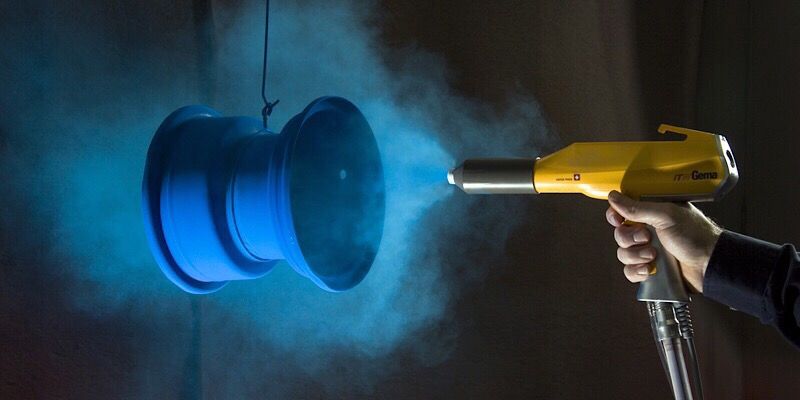- June 2, 2022
Powder coating is a popular finishing option in the rapid prototyping industry. It is a great way to impart improved physical and mechanical properties on custom machined parts.
This method of coating has been used since the early days of powder metallurgy and has become increasingly popular. It is widely used in industry today because of its numerous advantages, including corrosion resistance, high-quality surface finishing, and long-term environment-friendly impact.
So, what types of powder coating? how does it work? and tips for perfect powder coat finish. This article will address all of your concerns about powder coatings.
What is Powder Coating?
Powder coating is a type of coating that is applied as a dry powder to a surface and then cured under heat. The powder may be a thermoplastic or a thermoset polymer. It is usually used to create a hard finish that is tougher than conventional liquid coatings, which can be used on plastic, glass, or metal surface.
The powder coating is usually done by electrostatic spray deposition (ESD) or fluidized-bed application. Both two methods provide great gloss levels, textures, various colors, and high-quality surfaces, making them used on a variety of products, including medical devices, architectural applications, automotive, and even fiberboard avionics.
Types Of Powder Coating
Powder coating is usually divided into two main categories. There are thermoplastic, thermosets. In addition, there are also divided into three categories, including Thermoplastic, Thermoset, and UV Curable Powder Coating. The UV curable is the most advanced technique.
This article will introduce three types of powder coatings. You can decide which type to choose based on the parts’ materials, durability, cost-effectiveness, and quality.
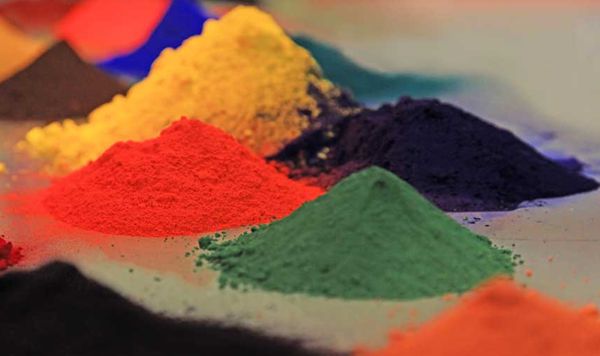
Thermoplastic Powder Coat Finish Materials
Thermoplastics are those which soften with heating and can be processed after that to gain specific strength and chemical properties with cooling. In thermoplastic powder coating, the dry powder is coated on desired part/material with heating the powder melts and covers the desired workpiece, and gains the specific mechanical strength on cooling.
Specifically for industrial purposes, thermoplastic coatings are implemented for endurance, esthetics, and safety purposes. Some of the thermoplastic powders used in the industry are mentioned below.
Nylon
Nylon is an excellent thermoplastic powder coating material with excellent durability and impact resistance. It is FDA approved and food graded, that is why it is commonly used in household and kitchen products such as dishwashers and for food storage items. It also has a low friction coefficient, which makes him ideal for the surface finishing of gears and mechanical Tools.
Polyvinyl Chloride (PVC)
The PVC coating is introduced in the market when the powder coating is in its initial stage, these coatings are pliable, sleek, and durable and show resistance to most of the solvents. polyvinyl-chloride is engineered with the polymerization technique in the presence of vinyl chloride, and it is produced in the industry on large scale. The basic benefit of these coating is in terms of chemical and electrical insulation. Moreover, they have excellent spray resistance, FDA-approved food staining resistance, and good dielectric and physical strength.
Polyester
The polyester coating is famous for its durable finish, weather and temperature resistance, esthetic look, and for its resistance to abrasions. For these reasons, this type is mostly used for outdoor automobile and avionics parts. Due to their aesthetic looks and physical strength, they are also ideal for architectural purposes.
Acrylic
Acrylic powder coating shows high-quality surface esthetics and high impact resistance, this process needs a little bit high curing temperature, that’s why it is mostly considered an expensive powder coating.
It shows excellent alkali resistance which is ideal to be used for components like washing machines and ship structures. Acrylic powder coating is applicable through electrostatic spraying to get ideal chemical resistance, weather ability outstanding smoothness, physical strength, and durability.
Thermoset Powder Coat Finish Materials
In thermoset powder coating The thermoset resigns are broken down to powder material, Which is fabricated on the desired material as a thin film. They provide improved chemical and physical characteristics in the aspect of esthetics, and corrosion resistance than ordinary oil coating.
In the modern, the thermostat material technology improved a lot, The ability to engineer thermostats resigns to increase their physical and chemical properties as per the targeted object, improving this niche a lot in specialized roles in surface finishing technique. The following are two common thermoset materials.
Epoxy
Epoxy is a type of thermoset powder coating that uses epoxy resin as the binder. Epoxy-coated surfaces are hard and brittle in nature, they are not good weather-resistant and mostly got dull with the passage of time. Due to these factors, they are mostly applicable to those materials which do not interact with direct UV light. But they show excellent durability, chemical resistance, and adhesion properties, which are often used in industrial and commercial applications where these properties are required.
Epoxy-polyester hybrid
Epoxy-polyester hybrid powder coatings offer the benefits of both epoxy and polyester. They have excellent chemical resistance and durability, making them ideal for a variety of applications. These powder coatings are also able to resist UV light and abrasion, making them an excellent choice for outdoor applications.
UV Curable Powder Coat Finish
UV curable powder coatings are a coating that cures under ultraviolet light. Unlike traditional methods, which require heat to cure, UV curable powder coatings can be cured at much lower temperatures. This makes them ideal for use on delicate or heat-sensitive materials. It also has a shorter curing time than traditional powder coatings.
UV curable powder coatings provide a number of advantages over traditional ones, including faster curing times, improved durability, and greater flexibility in terms of color selection. They are typically more expensive than traditional methods, but the improved performance can justify the additional cost.
How Does Powder Coating Process Work?
The powder coating mechanism is divided into different stages that are essential for smooth and high-quality work. The whole working process can be divided into three steps.
- Pre-treatment
- Application of Powder Coating Method ( fluidized bed application and electrostatic spray deposition )
- Curing Process
Pre-treatment
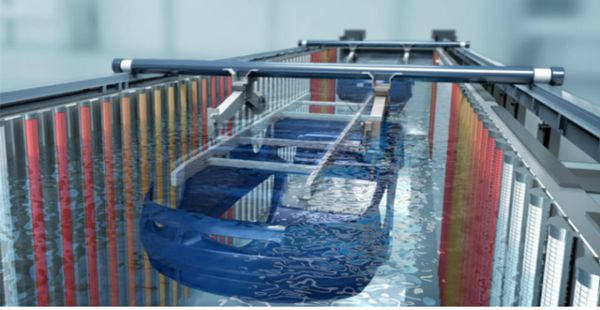
If you want a smooth and high-quality surface finishing of your workpiece, you need to implement some pre-treatment techniques, the presence of dust, oil, and grease pigments affects the coat on the material, so the workpiece should be treated accordingly.
If your workpiece is covered with derbies like pre-existing paint, and rust then you need to process it in a blast room, the room mechanism uses compressed air to blow up all the unwanted debris from the workpiece, The pressure, and the conditions are chosen as per required conditions. if the workpiece is covered with excessive pre-exist paint then might need iron blasting for that.
On the other hand, if your workpiece contains strains of oil, grease, or another chemical solvent then it is essential to wash it with some chemical like iron phosphate for steel, zinc phosphate for galvanized steel, and chromium phosphate for non-chromium treatments. other than these ordinary pre-treatment procedures many other new groups of technologies are used these days, that use transitional metals and other organo-metals are used with the formulation of zinc sulfate, these procedures are ideal for cost reduction, and for a low uniform finish.
Application of Powder Coating Method
Powder coating application is also done in various ways that are decided as per the production necessity, price bracket, and materials selection, the two most common methods are electrostatic spray deposition and fluidized bed powder coating.
Electrostatic Deposition
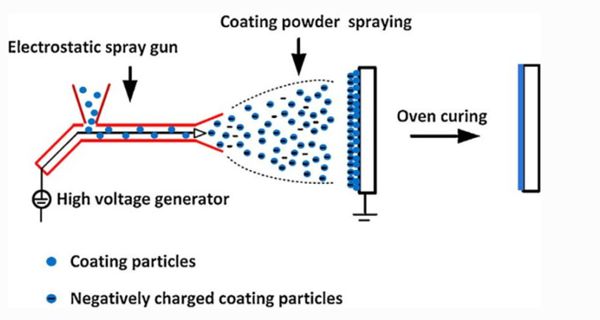
In the electrostatic deposition method, the charged powder particles are deposited on the workpiece by the electrostatic process, The application process of an electrostatic charge spray gun, a powder feeder, and a powder spray unit, The electronic spray gun is both operated manually or through computer numerical control and it gives charge to the powder through the HIT generator. When the application process starts, the electrostatic spray gun starts spraying negatively charged powder.
These charged Particles are thrown toward the positively charged grounded workpiece and got stuck at the surface of the workpiece due to the presence of electrostatic attraction. The workpiece is heated after powder deposition for some time for a smooth surface finishing. To produce thicker coatings one has to repeat or cycle or adjust the spray accordingly.
The parts of electrostatic powder coating are widely used in a variety of industries, including automotive, architectural, furniture, and appliances. It offers a number of advantages over traditional liquid paint finishes, including better durability, improved resistance to chipping and scratching, and a smoother overall appearance.
Fluidized Bed Powder Coating
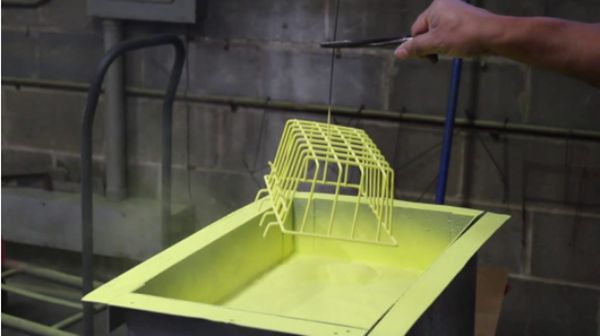
Unlike ESD, the fluidized bed powder coat is a type of powder coating that uses a fluidized bed to apply the powder coating to the workpiece. The workpiece is placed in the fluidized bed and the powder is applied to the workpiece using a spray gun. The powder is then cured using heat or ultraviolet light. The fluidized bed helps to evenly distribute the powder over the workpiece and the spray gun ensures that the powder is evenly applied.
The fluidized bed powder coat is a durable finish that is resistant to chipping, scratching, and fading. It is also a low-maintenance finish that does not require polishing or waxing.
Curing Process
Finally, the electrostatically deposited or fluidized bed powder coated part is cured in the curing oven for several minutes, the curing schedule depends upon the parts, materials, and the finishing requirements, The thick film parts take more time than thin-film parts. Normally the ideal curing time is 10 to 20 minutes with 350-400 degrees temperature. It melted the powders under these conditions and gives a smooth high-quality finish.
Pros and Cons of Powder Coat Finish
Powder coating is a far superior option to traditional wet paint for both protective and ornamental purposes; it provides a wide range of color options with a high-level surface finish, but it also has some disadvantages. Read on to learn more.
Pros of Powder Coatings
Durability
Durability is the key advantage of powder-coated parts, mostly the powder-coated material are resistive to fading, chipping, scratching, and wearing, They are ideal for physical strength, durable finish, and environmental resistance than spray painting.
They are ideally ultraviolent light protected, that’s all due to the engineered materials and other additives, unlike the conventional liquid coatings they are not faded out in an open environment, that’s why most automobile and aerospace industries use this technique.
Furthermore, rust issue is very much common for metal parts, the powder coatings provide stunning results for metals, it does not prevent the upper surface of the metal parts, but also prevents them from rusting for a long time. Anti-rust is the most famous property of powder coating than conventional paint.
Cost-effectiveness
It is a more cost-effective option than liquid paint. Although it has a higher initial purchase cost, it requires less energy to cure. Additionally, powder coating provides a more durable finish than liquid paint, which means that products coated with powder will last longer.
High quality
The powder coating finishes produce high-quality parts with a clean surface finish and modern aesthetics. The product’s physical strength, wear and tear resistance, and other properties have all been increased.
Environment-friendly
Powder coating is an ideal environmentally friendly method because it is devoid of all forms of harmful chemicals and solvents due to the presence of volatile organic compounds. Furthermore, This powder is applied to the surface and then cured under heat. The excess powder is then recycled, so there is very little waste generated by the process.
Cons of Powder Coatings
Higher initial costs
The initial setup cost of the powder coating industry is a little bit high, due to the high raw material cost. However, compared to conventional paint over a substantial amount of time, it is far less expensive, as traditional paint degrades after 1 or 2 years, whereas powder coat lasts for decades.
Powders can’t be mixed
In the case of wet paint, one can mix multiple colors to create a new one that achieves the desired outcomes, but this is not possible with powder paint. Powders cannot be blended, they must be used separately. However, there is a broad choice of colors to pick from.
Thin coats
Powder coating is not ideal for thin coats, it can be operable to a minimum of 40 to 60 microns, if you are desired to do a much thinner coat than this, then it is advisable to use wet paints for better results.
Difficult to touch-ups
Touch-ups are simple to make with wet paints, but not with powder coats, since one must complete the entire procedure if a touch-up is required, therefore one must be an expert in this mechanism.
Applications of Powder Coat Finish in Different Industries
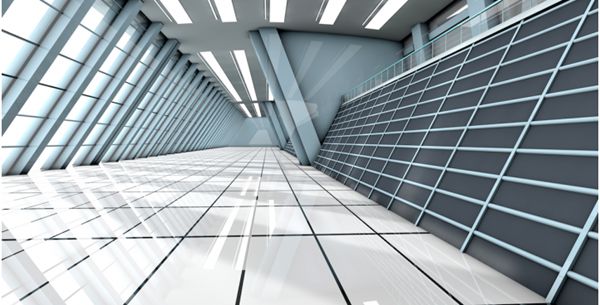
Due to high industrial benefits, these powder coating products have a wide range of applications in different industries, and their use is increasing by the day.
Automobile: Powder coating finishes are mainly used in all types of automobile industries, mostly it is used for the manufacturing of wheels, door handles, motorbike frames, Break components, radiators, metal surfaces, shock absorbers, oil filters, battery trays, and coils.
Architectural and Steel Industry: Due to their physical strength, corrosion resistance, high gloss, and aesthetic looks powder coated products are used in the architectural industry in stadiums, aluminum windows and doors, fencing, sheet metal, household appliances, and building facades.
Outdoor Applications: Due to its durability, ultraviolet light protection, and long-lasting, powder-coated materials are mostly used in the sports industry, agricultural machinery, outdoor products, and signs.
Electronics: Powder coating is widely used in the electronics industry. Powder-coated household wires, electric equipment, and daily electric tools are safer and more beneficial than a wet coating, this is all due to their modified properties of electroconductivity and electric dissipativity.
Medical Industry: In the medical industry, sterilized tools and smooth surface finishing are essential; powder-coated finishing is used on medical equipment, disinfection machines, etc.
5 Tips To Get Perfect Powder Coat Finish
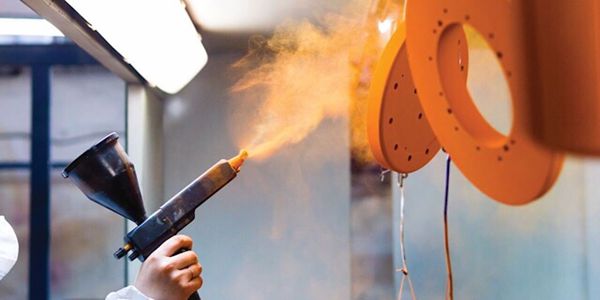
Powder coating is a robust and long-lasting technology, there are several things that you can do to ensure that your coat finish turns out perfect. Here are a few tips:
1. Prepare the surface
This is probably the most important step in getting a good powder coat finish. If the surface is not prepared properly, the powder will not adhere well and will not give you the desired results. Make sure to sand or grind the surface smooth and free of any contaminants before you start powder coating.
2. Choose the right powder materials
There are different types of powder for different applications. Make sure to choose the right powder coating materials for your project. If you are unsure, consult with a professional powder coat finish company.
3. Avoid picture framing
Picture framing is a common problem when powder coat finishes and can be caused by several factors. Most often, it occurs when too much powder is applied to the component, resulting in a thicker film around the edges. Other causes can include aiming the spray gun directly at the edges of the component, or having the gun settings set too high.
To avoid picture framing, pay attention to the spray dispersal and gun when applying the powder. Try not to aim at the edges directly, and watch the flow carefully to adjust your gun settings problem.
4. Use the coating gun correctly
If you are using a powder coating gun, make sure that the tip is the correct size for the job. A too-small tip will result in the powder not being able to flow properly and will cause uneven coverage. A too-large tip will result in over-spray.
Also, you should have the correct voltage settings on your powder coating gun. Too much voltage will cause the powder to bead up and will not adhere properly to the surface. Too little voltage will result in poor coverage.
5. Make sure to cure the powder
Curing is what actually sets the powder and gives it its final finish. Be sure to cure the powder according to the manufacturer’s instructions. This step is usually done in an oven at a specific temperature for a specific amount of time. Once the powder is cured, you need to inspect your powder coat finish for any imperfections.
Conclusion
Powder coating is a dry finishing process that uses finely ground particles of pigment and resin to give surface gloss levels and a consistent finish. It provides a more durable finish than traditional paint and is available in a wide variety of colors and finishes. If you are considering powder coating for your projects, you may need to spend lots of time getting the right expertise and experience to get the best results.
But no worries, here at WayKen, we offer professional finishing services to help you get the most out of the powder coating process. Our team has years of experience in providing cost-effective surface finish solutions for a variety of industries, so you can be confident that your parts will look great and meet your expectations. Upload your CAD files and let’s get started!
FAQS
What is the difference between powder coatings and wet paint?
Both processes contain pigments, additives, and chemicals, however, the main difference is the presence of Solvent, Wet paint contains a solvent, that keeps him in liquid form, mostly wet paints didn’t show contraction and expansion, whereas the powder coat holds well on surfaces, and show contraction and expansion as per conditions., which makes him more durable and long-lasting
How much does powder coating cost?
The cost of powder coating depends on a number of factors, including the type of powder used, the size of the surface to be coated, and the complexity of the coating process. In general, powder coating is less expensive than traditional liquid paint finishes. The average cost for powder coating services is $75-$150 per square foot.
Why powder coat is better than conventional ordinary paint?
Powder coat is usually used to create a hard coating finish that is tougher than conventional paint. It is more durable than regular paint and can resist corrosion, chipping, and fading. It is also easier to apply evenly than regular paint and can be applied to a variety of surfaces.
Why industrial powder coating is green?
Powder Coating doesn’t use volatile organic compounds that contain methylene chloride, benzene, and formaldehyde. This is safer for painters and those who come into direct contact with the product. In addition, the powder itself doesn’t have any carcinogens or heavy metals. You can recycle powder coating materials and receive up to 92% of the original powder.

